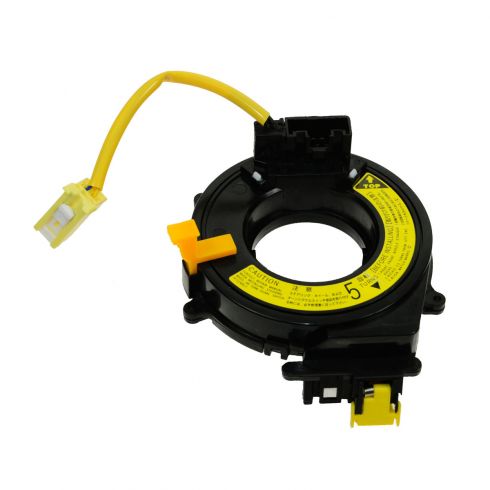Within modern vehicles, the guidance system is a wonder of innovation that merges both mechanical and software components to provide secure and responsive handling. One essential component that often goes ignored is the spiral spring. This vital part plays a significant role in connecting the steering wheel to the vehicle's electrical systems, enabling for the flawless operation of different functions while driving. Understanding how the clock spring works can shed light on its importance in upholding your steering wheel's functionality.
Especially in vehicles like Honda, the clock spring serves as a adaptable connector that ensures a uninterrupted electrical connection between the steering wheel and the vehicle's onboard systems. This covers all aspects from the airbag system to the sound controls and cruise control features. When you move the steering wheel, the clock spring extends and rewinds without losing that connection, permitting you to enjoy all the comfort and safety features of your car. Let's investigate the magic of clock springs and how they contribute to a seamless and secure driving experience.
What is a Clock Coil?
A time spring, also known as a roll cable, is a important part in current vehicles, especially for those equipped with features such as cushion systems and steering wheel controls. It is designed to maintain electrical connections between the vehicle's steering wheel and the rest of the car while allowing for the movement of the steering wheel. This design ensures that key functions stay operational, even as the driver rotates the wheel in either direction.
The clock spring consists of a thin, spiral ribbon of wire that may wind and uncoil as needed. When you turn the steering wheel, the clock spring moves with it, providing uninterrupted electrical connections for systems like speed regulation, music controls, and the crash protection system. Without this component, these features could be impaired, posing protection and utilization risks to the motorist and riders.
In many vehicles, including widely-used models from Toyota, the clock spring is a essential part of the steering system. While it is designed to endure for many years, it can wear out over time. If this happens, it may lead to complications such as broken steering wheel controls or, more importantly, the malfunction of the airbag system during an accident, highlighting the significance of prompt maintenance and replacement.
Value of Spiral Springs in Steering Mechanisms
Clock spring devices play a critical role in the functionality of steering mechanisms in modern vehicles. They are indispensable for maintaining the relation between the wheel and numerous electrical devices, such as safety bags, speed control, and stereo settings. When you rotate the wheel, the spiral spring ensures that these systems continue to work, even as the wheel spins. Without a well-working clock spring, drivers could face risks due to non-deploying airbags or faulty controls, making it essential for this component to be in top form.
In further to their safety features, clock springs contribute to the overall convenience and enjoyment of driving. They provide a dependable interface for digital signals while allowing for unimpeded and unrestricted steering action. This means that drivers can enjoy improved features without sacrificing the ability to control their vehicle safely. For case in point, the integration of multiple electronic functions into the wheel assembly relies heavily on the spiral spring, allowing for a more intuitive experience.
Consistent upkeep of the spiral spring should not be overlooked, especially in vehicles like Toyota vehicles, where these components are integral to the steering mechanism. A malfunctioning spiral spring can lead to inconsistent behavior in vehicle operations, potentially putting drivers and riders at risk. By recognizing the value of clock spring devices, vehicle owners can focus on their upkeep, ensuring that all functions related to steering work seamlessly and without issue.
Common Issues with the Toyota Clock Springs
Clock springs in Toyota vehicles can experience various typical issues that impact their performance and, subsequently, the operation of the steering wheel. One common problem is wear and tear due to frequent usage. Over time, the conductors within the clock spring can become worn, leading to intermittent connections. toyota clock spring can cause problems with the steering wheel functionality, such as the safety systems or audio controls, which may stop working altogether.
Additionally, issue arises from environmental factors. Coming into contact with moisture, dust, and severe temperatures can hasten the deterioration of the clock spring. In some cases, this can lead to the clock spring malfunctioning prematurely, demanding replacement. Drivers may see alerts on their dashboards, especially the airbag indicator, signaling that the clock spring might be malfunctioning and requires attention.

Lastly, faulty installation of the clock spring during maintenance can lead to serious complications. If the spring is not installed correctly, it can become unstable, which may cause the failure of vital electrical connections. This scenario can be particularly risky as it poses a risk to the airbag system's reliability. Routine check-ups and proper installation are crucial to preventing such issues with Toyota clock springs.
